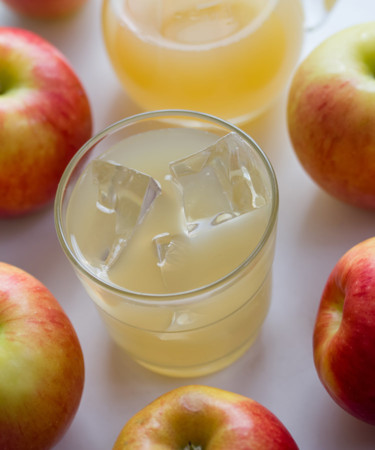There seems to be an idea that the Irish drink their cider (hard cider, that is) with ice. In fact, both Bulmers (known here as Magners) and Strongbow—both owned by Heineken International—encourage the consumption of hard cider over ice. We were just wondering…why?
On one hand it looks perfectly refreshing, and works incredibly well in advertising: a river of clear-golden cider flowing over crystal cubes—beverage porn of the highest and most salivary gland tickling order. But what exactly does ice do for cider?
Most hard ciders tend to be lower in alcohol than, say, whiskey—where some water or a nice rock of H2O might do well to dilute the high-test booze and open up some flavors. But ciders rank typically well below the double-digit ABV mark of almost anything reasonably served “on the rocks.”
It seems mostly like a marketing ploy by Magners et al.—what the BBC called its “unique selling point”—designed to mask thinner flavors and/or give cider a specific form of consumption—the way shoving a lime into a bottle of Corona gives a basic macro lager some shadow of exotic flair. According to Heineken, the cider apples “truly fulfill their potential once paired with ice.” (It’s a pretty intense campaign. Their blog post is literally called “Strong Bow Cider Over Ice is the Bestest.”)
Another possibly excuse/theory for the ice-cider connection is seasonality. If you don’t mind a slightly watered down drink, or want something lighter in hotter months, hard cider over ice might just surpass iced tea or even a mint julep on a late summer day (when the taste of apples feels a bit more appropriate anyway). But the idea that cider in Ireland is always, or should always be, consumed over ice seems to have more to do with marketing than real habit. And more than a few folks online seem to agree.
In fact, some ciders are better served closer to room temperature—where more flavors are going to come out. It really depends on what you’re looking for from your alcoholic apples. An extremely dry cider might be more palatable, and quenching, at a colder temperature, but you might get more fruit notes—and less two-dimensional sugar—from a more standard American craft cider served at room temp.
Chilled cider is perfectly fine on its own, and unless you’re looking for some dilution—and maybe a slower buzz—you can go ahead and skip the cubes.
